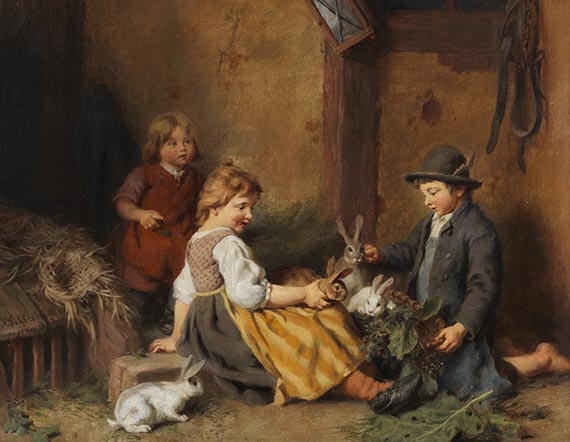Oil on canvas. Signed on the stool in the lower left margin. 38 x 49 cm.
• Schlesinger was one of the most important representatives of the Düsseldorf School, which revived genre painting in the late 19th century.
• Alongside great genre artists like Ludwig Knaus, Benjamin Vautier, and Franz Defregger, Schlesinger's works are characterized by their poetic-descriptive, humoristic narrative appeal.



